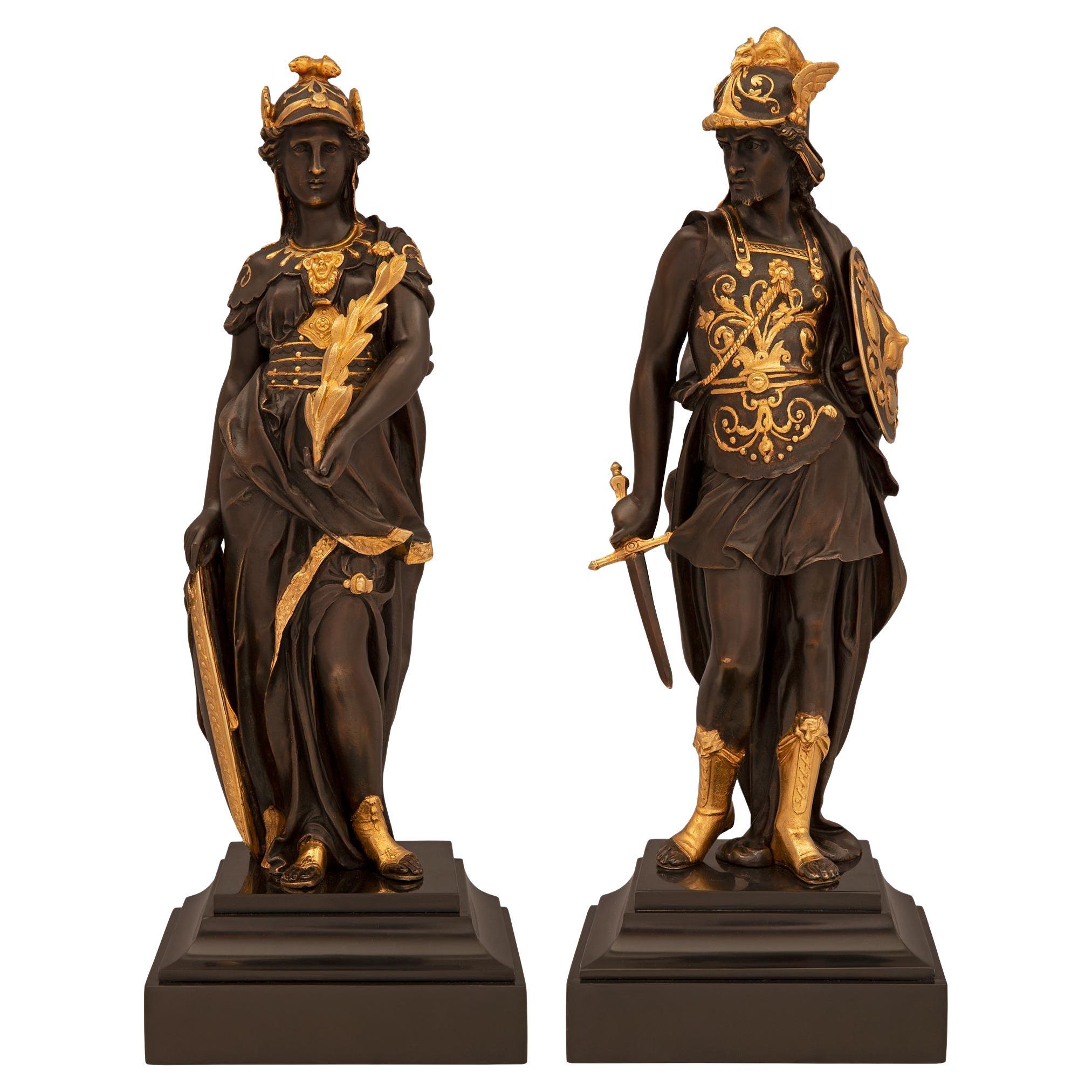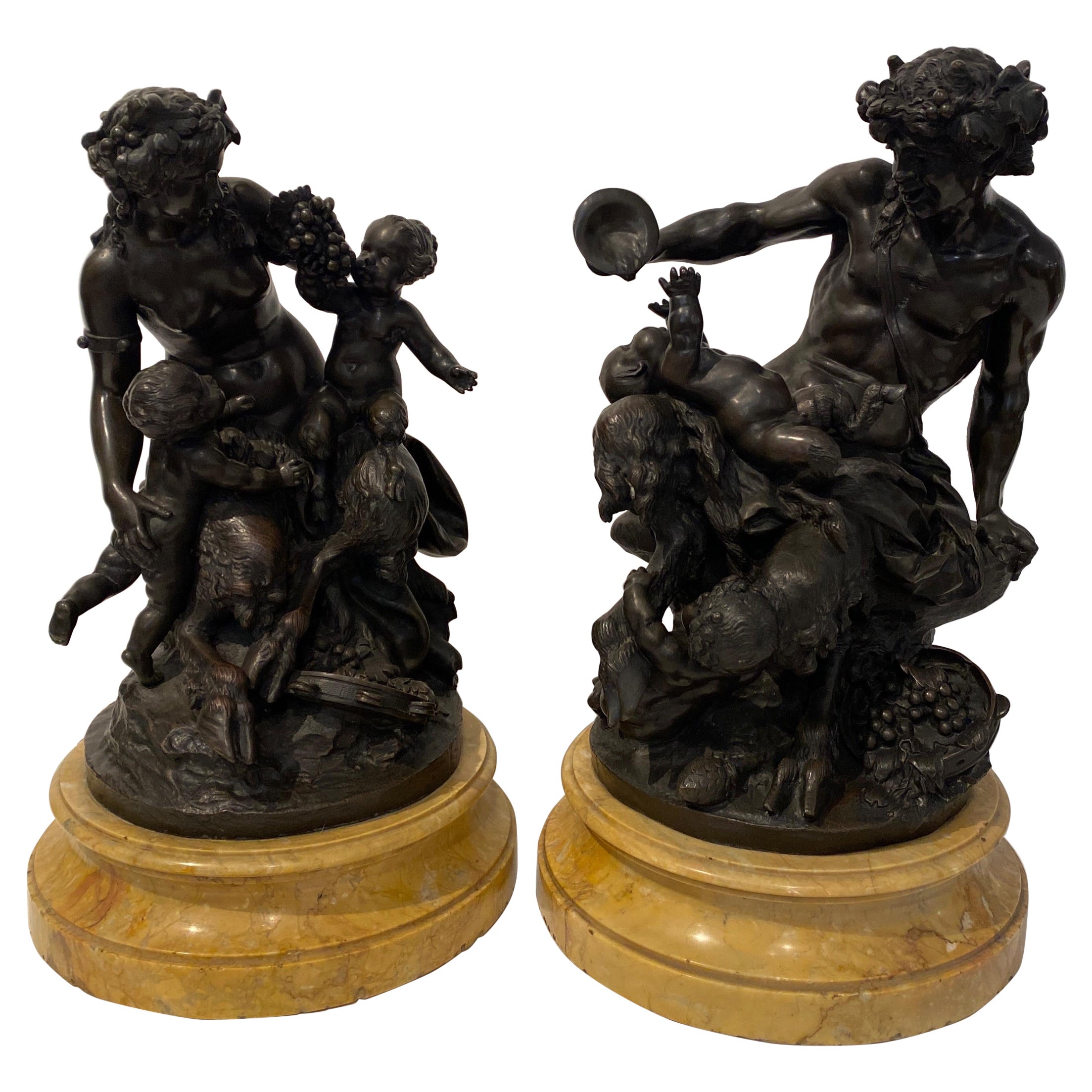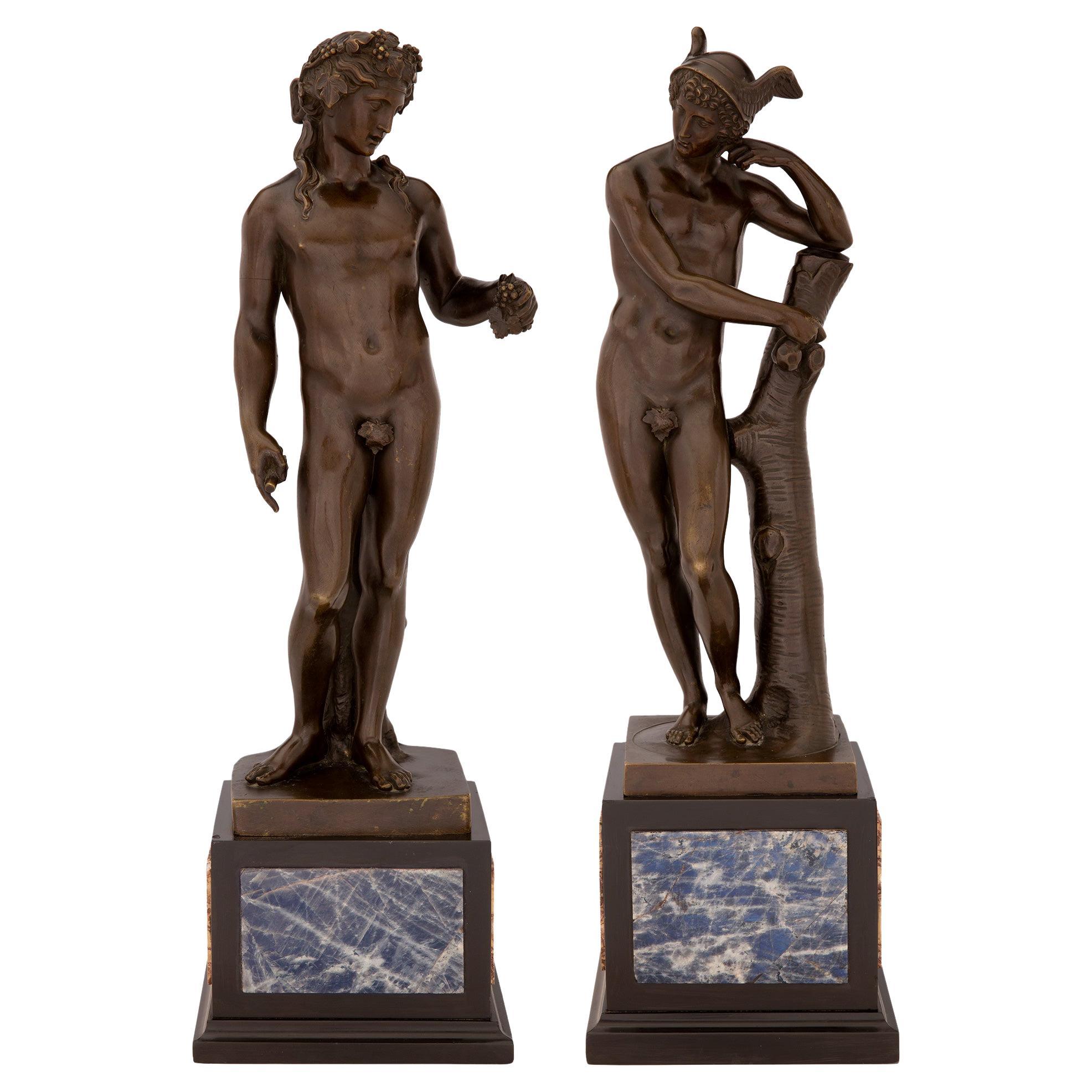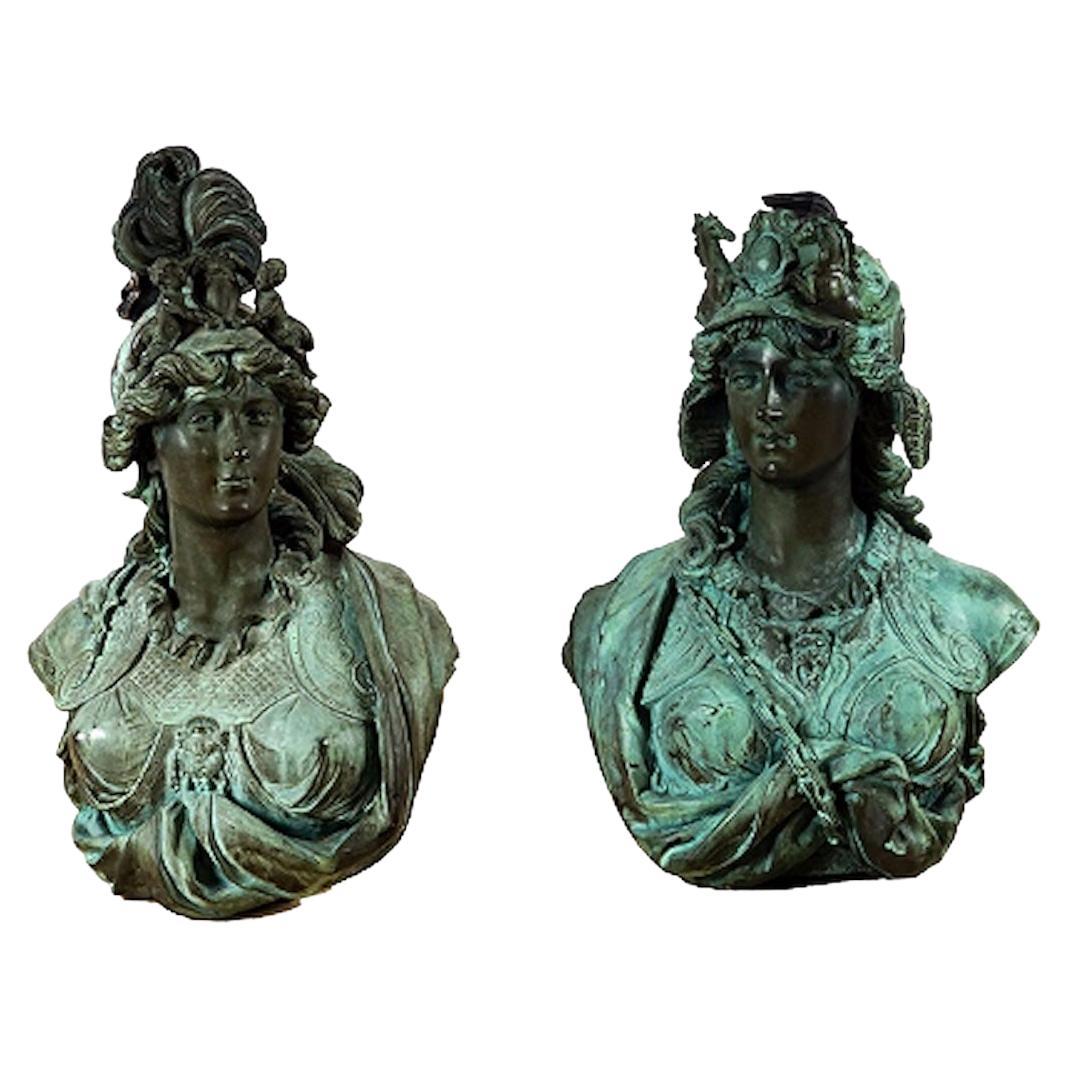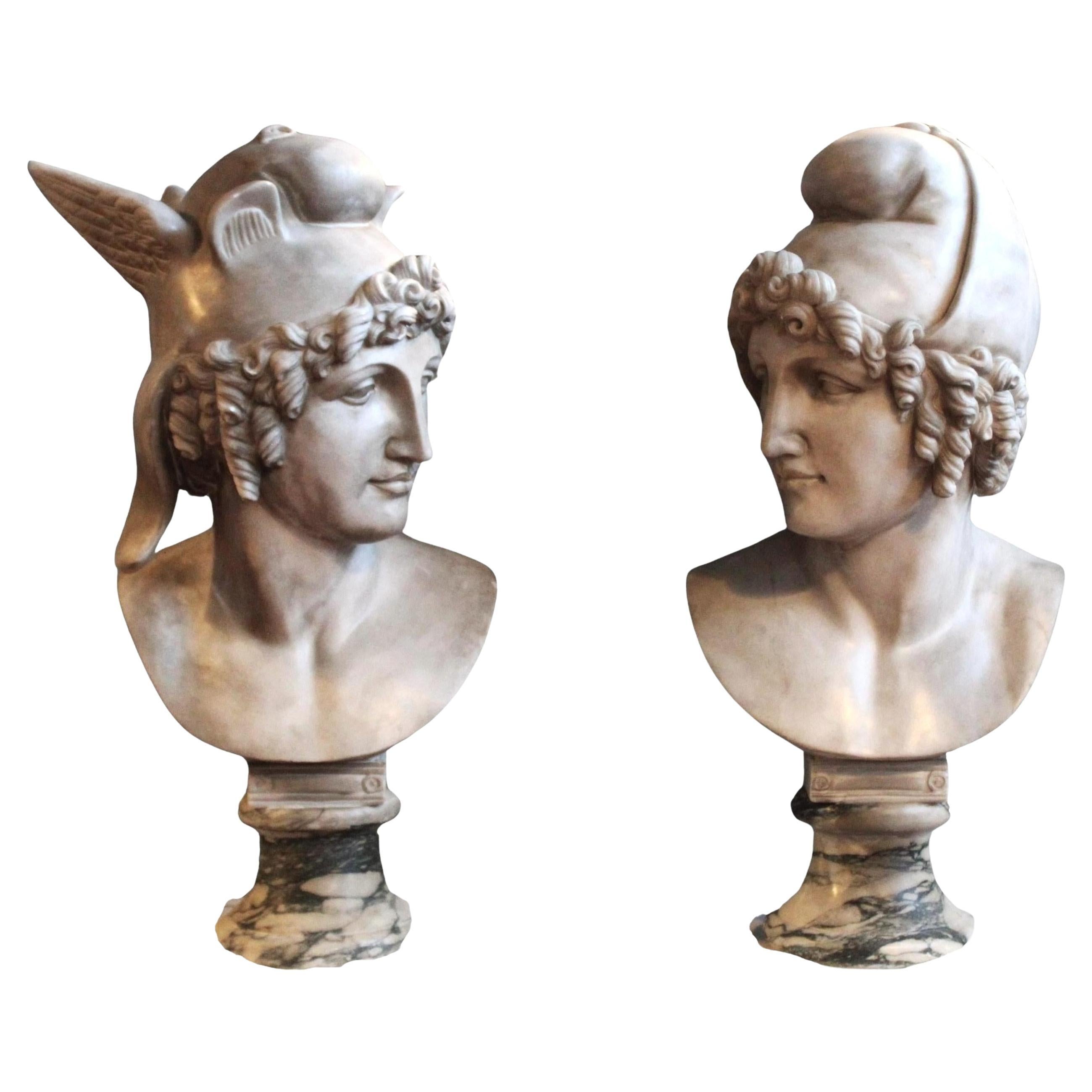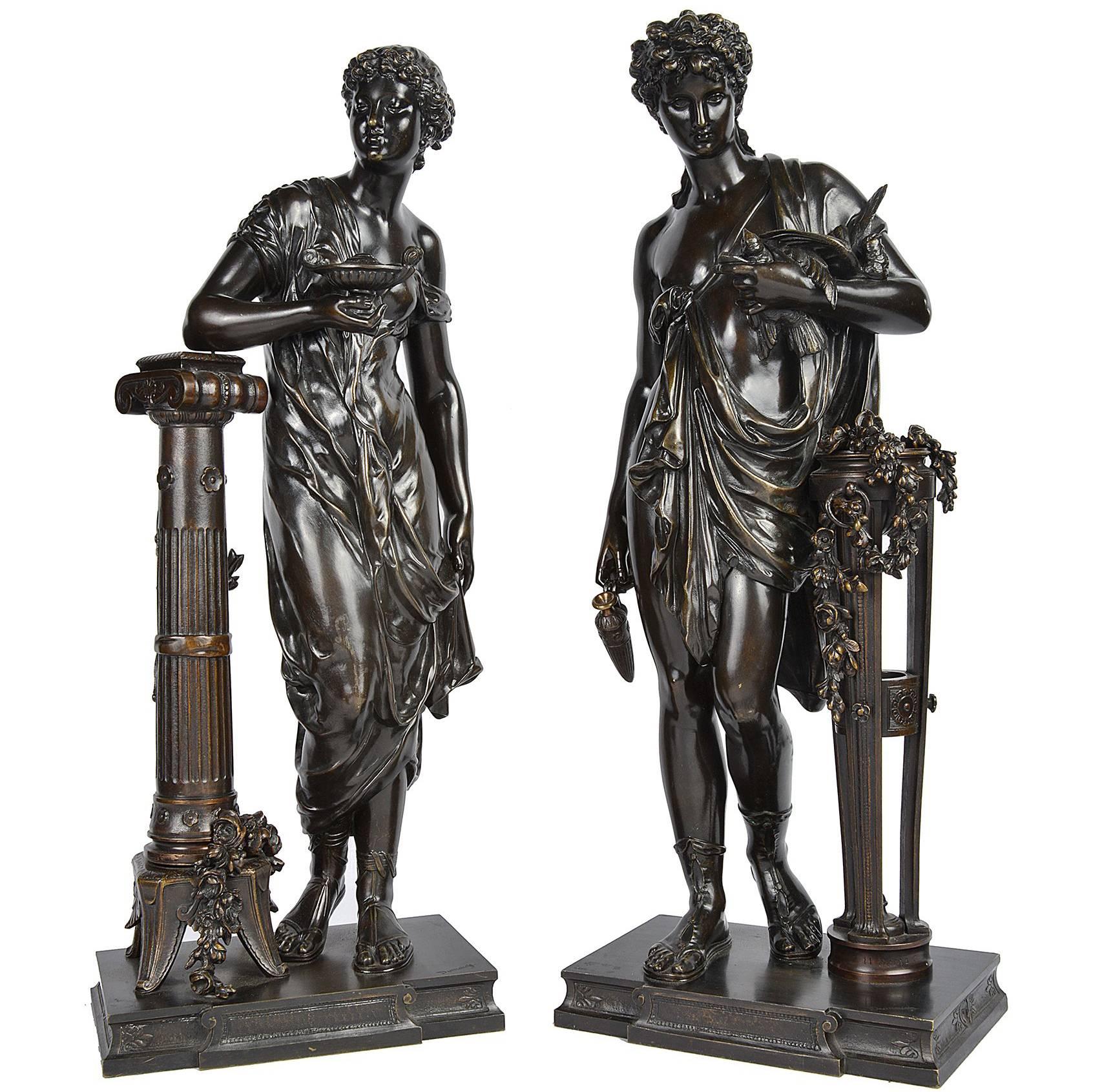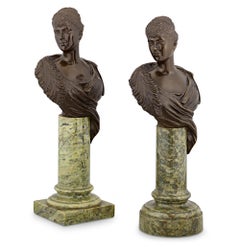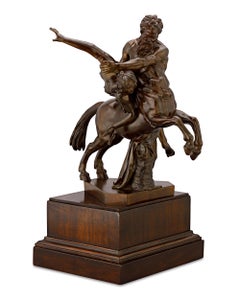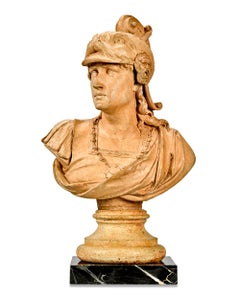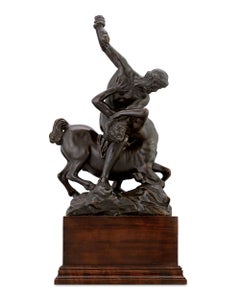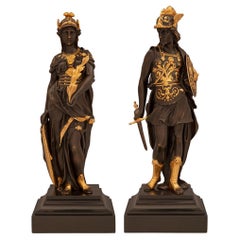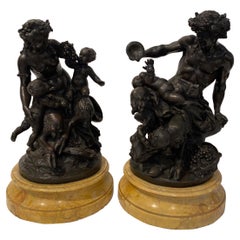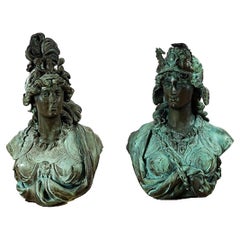Items Similar to Bronze Reliefs of Minerva and Mars by Émile Pinedo
Want more images or videos?
Request additional images or videos from the seller
1 of 9
Émile PinedoBronze Reliefs of Minerva and Mars by Émile PinedoCirca 1880-1900
Circa 1880-1900
$54,500
£41,129.65
€47,087.23
CA$76,863.07
A$84,386.06
CHF 44,024.39
MX$1,021,188.86
NOK 551,777.39
SEK 519,919.37
DKK 351,493.62
About the Item
Émile Pinedo
1840-1916 French
Bronze Reliefs of Minerva and Mars
Bronze
These exceptional bronze reliefs depicting the Roman deities Minerva and Mars represent the pinnacle of 19th-century French bronze casting, executed by master sculptor Émile Pinedo. The paired compositions showcase the artist's mastery in capturing both the classical power and beauty of these mythological figures, rendered with the technical precision that established Pinedo among the foremost bronze founders of his era.
Minerva, goddess of wisdom and warfare, is portrayed in profile with her characteristic plumed helmet adorned with elaborate decorative elements. Mars, god of war, appears equally commanding with his ornate military regalia and powerful visage, the intricate detailing of his armor and flowing drapery showcasing the artist's meticulous attention to surface texture and form.
Émile Pinedo established himself as one of Paris' most accomplished sculptors and bronze founders, inheriting both his father's foundry and his dedication to excellence in bronze casting. Making his debut at the prestigious Paris Salon of 1870, his bronzes became synonymous with the highest standards of Parisian craftsmanship, combining technical mastery with artistic vision. Today, his works remain highly coveted by collectors and institutions alike.
Each bears the artist's stamp verso on integral hanger, Minerva no. “536”
Circa 1880-1900
Each: 40 5/8" high x 21 1/2" wide x 8 1/2" deep
Provenance:
Private collection, Rome
Private collection, Alabama
Private collection, Brussels
M.S. Rau, New Orleans
- Creator:Émile Pinedo (1840 - 1916, French)
- Creation Year:Circa 1880-1900
- Dimensions:Height: 40.63 in (103.21 cm)Width: 21.5 in (54.61 cm)Depth: 8.5 in (21.59 cm)
- Medium:
- Period:
- Condition:
- Gallery Location:New Orleans, LA
- Reference Number:Seller: 32-07171stDibs: LU18616516252
About the Seller
5.0
Vetted Professional Seller
Every seller passes strict standards for authenticity and reliability
Established in 1912
1stDibs seller since 2013
19 sales on 1stDibs
Typical response time: 10 hours
- ShippingRetrieving quote...Shipping from: New Orleans, LA
- Return Policy
Authenticity Guarantee
In the unlikely event there’s an issue with an item’s authenticity, contact us within 1 year for a full refund. DetailsMoney-Back Guarantee
If your item is not as described, is damaged in transit, or does not arrive, contact us within 7 days for a full refund. Details24-Hour Cancellation
You have a 24-hour grace period in which to reconsider your purchase, with no questions asked.Vetted Professional Sellers
Our world-class sellers must adhere to strict standards for service and quality, maintaining the integrity of our listings.Price-Match Guarantee
If you find that a seller listed the same item for a lower price elsewhere, we’ll match it.Trusted Global Delivery
Our best-in-class carrier network provides specialized shipping options worldwide, including custom delivery.More From This Seller
View AllPair of Bronze Busts of Queen Mary by William Henry Tyler
Located in New Orleans, LA
Pair of Bronze Busts of Queen Mary when Duchess of York
William Henry Tyler
Dated 1893
These rare and highly important bronze busts of the future Queen Mary, created in 1893 by the ...
Category
19th Century Figurative Sculptures
Materials
Marble, Bronze
Nessus and Deianira Bronze
By Giambologna
Located in New Orleans, LA
A technical and creative masterpiece of the late Renaissance era, this extraordinary bronze figure depicts the famed Greek legend of The Abduction of Deianira. Bringing together the ...
Category
17th Century Renaissance Figurative Sculptures
Materials
Bronze
Perseus
Located in New Orleans, LA
The legendary Greek god Perseus is the subject of this elegant half-bust by Ubaldo Gandolfi, a major painter and sculptor from Bologna. The son of Zeus and Danaë, Perseus was the le...
Category
Mid-18th Century Other Art Style Figurative Sculptures
Materials
Terracotta
Hercules and the Centaur Nessus Bronze
Located in New Orleans, LA
This extraordinary Italian bronze embodies all of the hallmarks of the very best Florentine sculptures of the 17th century. The work is crafted in the Mannerist style of the late Ren...
Category
17th Century Mannerist Figurative Sculptures
Materials
Bronze
Bronze of Pluto Abducting Proserpine after François Girardon
Located in New Orleans, LA
After François Girardon
1628-1715 French
Pluto Abducting Proserpine
Bronze
This High Baroque period composition captures the famed narrative of Pluto and Proserpine from Roman mythology. The late 17th-century patinated bronze, created after François Girardon's marble composition, captures the very moment that Pluto seizes Proserpine. The anguished goddess reaches skyward, attempting to escape the god’s grasp while Pluto’s stoic face betrays his knowledge that his ploy will succeed. This pivotal moment in the mythological tale has captured the imagination of many art historical greats, from Bernini to Rubens. François Girardon’s version of the climax demonstrates incredible finesse and artistry, modeled expertly in bronze in the present work by a later sculptor. The statue brings a twist of intertwined bodies into a dynamic frenzy, paralleling the tension of the legendary story.
In ancient Roman mythology, Proserpine, the beautiful daughter of Ceres — known as Persephone in Greek mythology — was picking flowers in the fields when she was suddenly abducted by Pluto, the god of the underworld, and taken to his kingdom. Consumed with grief, her mother Ceres, the goddess of agriculture, scorches the earth, stopping the growth of grain and fruit. Jupiter attempts to intervene and secure Proserpine’s return to earth, negotiating a compromise with Pluto and the Fates that allows Proserpine to be released for part of the year before returning to Pluto’s underworld. Proserpine’s journey back and forth is an allegory for the changing seasons; when Prosperine is with her mother, the earth warms and provides bountiful harvests. Upon her annual return to the underworld, however, the earth once again becomes cold and barren.
After returning to France after years of training in Rome, François Girardon quickly rose to become one of the greatest artists in France. He was elected a member of the Académie Royale de Peinture et de Sculpture in 1657 and would become Chancellor of the Royal Academy in 1695. The artist was approached frequently for royal commissions and Girardon’s Pluto was originally commissioned by Louis XIV for the gardens at his Palace of Versailles. It was one of four monumental marble groups intended to decorate the corners of Charles Le Brun’s never completed garden at the chateau, the Parterre d’Eau. Each group of three figures symbolized one of the four elements: earth, air, fire and water. Pluto’s association with hell made him the apt...
Category
Early 18th Century Baroque Figurative Sculptures
Materials
Bronze
Bronze of Amphitrite after Michel Anguier
Located in New Orleans, LA
After Michel Anguier
French 1612-1686
Amphitrite
Bronze
This remarkable bronze masterpiece was cast after a High Baroque masterwork by French sculptor Michel Anguier. After traini...
Category
17th Century Baroque Nude Sculptures
Materials
Bronze
You May Also Like
Pair of French 19th Century Renaissance St. Bronze, Marble, and Ormolu Statues
Located in West Palm Beach, FL
A striking and high quality true pair of French 19th century Renaissance st. patinated bronze, ormolu, and black Belgian marble statues of Hermes and ...
Category
Antique 19th Century French Figurative Sculptures
Materials
Belgian Black Marble, Bronze, Ormolu
Pair of Magnificent Patinated Bronze Sculptures After Clodian
By Claude Michel Clodion
Located in Lambertville, NJ
A Pair of 19th Century Grand Tour bronzes after the original sculptor, Claude Michael Clodion. The male and female Satyr Bacchus themes with putti and the adult figures with an origi...
Category
Antique 1870s Grand Tour Figurative Sculptures
Materials
Siena Marble, Bronze
Pair of French 19th Century Neoclassical Style Patinated Bronze Statues
Located in West Palm Beach, FL
A striking pair of French 19th century Neo-Classical st. patinated bronze statues of Bacchus and Mercury. Each wonderfully executed statue is raised on a square base decorated with u...
Category
Antique 19th Century French Neoclassical Figurative Sculptures
Materials
Marble, Bronze
Important Pair Of Patinated Cast Bronze Busts of Bellona and Minerva
Located in Montreal, QC
Important pair of patinated cast bronze busts representing goddesses Mars and Minerva. Beautifully cast in the Renaissance Beaux Arts style, featuring cherubs , sea horses and classical attribute, retaining a weathered verdigris patinas from being exposed outdoors . Both sculptures are unsigned and both bear a museum collection inventory number. France: circa 1880 Provenance: Former collection of the "Clerc De Saint -Viateur" or the Clerics of Saint Viator also known as the Viatorians a Roman Catholic clerical religious congregation of Pontifical Right for men (priest, brothers and lay associates) founded in Lyon, France, in 1831 by Father Louis Querbes. The congregation had a large collection including the pair of sculptures on loan to the Musée De Musée...
Category
Antique 1880s French Belle Époque Figurative Sculptures
Materials
Bronze
Pair of busts of Mercury and Paris
Located in Rome, IT
Pair of busts of Mercury and Paris in marble.
ADDITIONAL PHOTOS, INFORMATION OF THE LOT AND SHIPPING INFORMATION CAN BE REQUESTED BY SENDING AN EMAIL
Pair of busts Mercury and Pari...
Category
20th Century Italian Busts
Materials
Marble
Pair of Classical Grecho Bronze Statues of Classical Females by Dumaige
By Etienne-Henri Dumaige
Located in Brighton, Sussex
An impressive pair of classical bronze statues of classical females, each wearing robes, bearing gifts and resting on classical pedestals.
Signed; Dumaige.
Category
Antique 19th Century French Greco Roman Figurative Sculptures
Materials
Bronze
